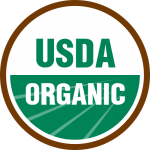Repeated exposure to the sun will have its natural consequences for your skin. The best way to protect yourself is the proper use of sunscreen.
Regardless of color, skin that is repeatedly exposed to the sun tends to become tough and thick. Beyond the middle years of adulthood, the results can be even more dramatic.
Selecting a sunscreen product that offers some degree of protection from the sun’s UV rays can be one way to protect your skin from these ageing affects.
Due to the variety and range of sunscreen products available, here are some basic factors to consider in making an appropriate selection:
1. Ingredients:
Sunscreen products can be made with ingredients to protect against UVA rays, and / or other ingredients to protect against UVB rays (which are in fact more harmful for sun burning than UVA rays). The best products offer ingredients for protection from both UVA and UVB rays. Consider also the actual ingredient list.
2. SPF (Sun Protection Factor):
The SPF number on the product’s label refers to the strength of protection, and the length of time a sun-screening product will allow your skin to be in the sun without burning – relative to the length of time bare skin (or skin without the product applied) would burn or redden.
For example, let’s say ‘Danny’, a young student, would normally burn after 12 minutes of being out in the sun. He applies a sunscreen, also referred to as a sun block, with an SPF of 15. This means that he should be fine for 15 times his average amount of protection time. In other words, ‘Danny’ is protected for up to 3 hours.
12 minutes x 15 SPF = 180 minutes (3 hours).
(Now if ‘Danny’ applied a sunscreen with an SPF of 30, he’d be protected for up to 6 hours.
12 minutes X 30 SPF = 360 minutes (6 hours)
3. Skin Type:
When selecting a sunscreen, it’s important to consider the different skin types and how they react with exposure to the sun.
Young children: For ages 6 months+, consider a product with SPF of 15 or higher to protect against both sun tanning and burning. Also consider a product label that lists protection against both UVA and UVB rays (also known as the “broad-spectrum”).
Skin Type – Very Fair: This skin type generally burns quickly. Tanning is rare. Consider sunscreen products containing SPF 20 to 30.
Skin Type – Fair: This skin type almost always burns easily. Some tanning can occur, although not much. Consider sunscreen products containing SPF 12 to 20.
Skin Type – Light: This skin type burns in the moderate range. Tanning is normally gradual, yielding a light brown shade. Consider sunscreen products containing SPF 8 to 12.
Skin Type – Medium: This skin type burns in the minimal range. Tanning happens much of the time, yielding a moderate brown shade. Consider sunscreen products containing SPF 4 to 8.
Skin Type – Dark: This skin type rarely burns. Tanning occurs big time, yielding a dark brown shade. Consider sunscreen products containing SPF 2 to 4.
Skin Type – Other: This skin type includes people with moles (or whose close blood-relatives have a history of moles), people with skin cancer in their family histories (including melanoma), and people with very fair skin and hair. As this is a high-risk category for health damage from too much UV exposure, consider using sunscreen products with the highest SPF available, combined with light to moderate sun exposure.
Once you’ve selected the most suitable sunscreen product, and regardless of your skin type, apply your sunscreen ‘before’ going out into the sun’s rays. To ensure the best possible UV protection, the sunscreen product should also be spread fairly thick, and in a uniform manner over all areas of the skin that will be exposed to the UV rays.
Taking appropriate care of your skin ‘now’ will help determine a healthier and younger-looking skin in the future.
